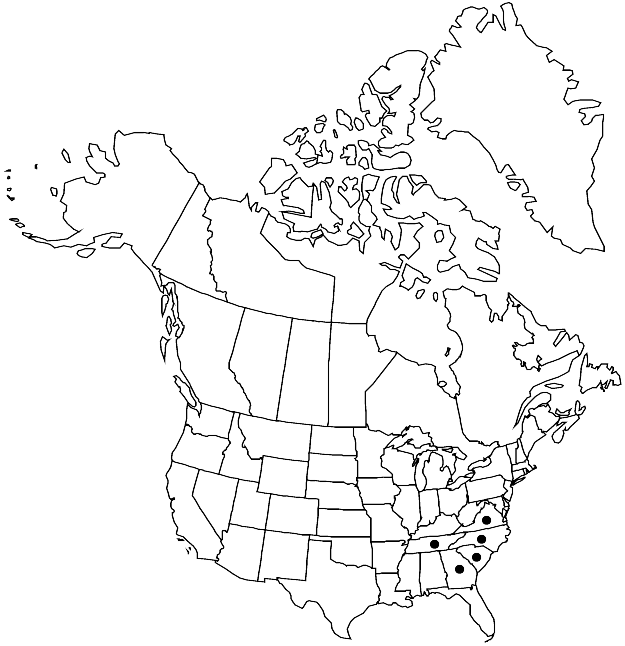Orthotrichum exiguum
in A. Gray, Manual ed. 2, 633. 1856.
Plants 0.3–1 cm. Stem leaves erect-appressed when dry, oblong-lanceolate to oblong, 0.7–1.3 mm; margins reflexed to broadly recurved, entire; apex rounded-obtuse; basal laminal cells elongate, walls thick, ± nodose; distal cells 7–13 µm, 1-stratose, papillae 1 or 2 per cell, conic or C-shaped, small. Specialized asexual reproduction by gemmae on leaves. Sexual condition gonioautoicous. Seta to 5 mm. Capsule immersed or slightly emergent, ovate-oblong, widest at mouth, less than 1 mm, distinctly 8-ribbed to base when dry; stomata superficial; peristome double; prostome absent; exostome teeth 16, spreading or reflexed when dry, papillose to cross striolate proximally, papillose to vertically or reticulately striolate distally; endostome segments 8, well developed, usually present when capsule is old and dry, thick, delicate, of 2 rows of cells, as wide as exostome teeth, hyaline, granulate-papillose. Calyptra short-conic, finely papillose, naked or hairs few near tip, hairs finely papillose. Spores 17–20 µm.
Habitat: Base and trunks of trees
Elevation: low to moderate elevations (10-200 m)
Distribution

Ga., N.C., S.C., Tenn., Va., e Asia.
Discussion
Orthotrichum exiguum is distinguished by the distal laminal cells with bulging walls and C-shaped papillae; clavate stems; papillose, quadrate basal cells; differentiated perichaetial leaves; and capsules that are widest at the mouth, with 16 reflexed exostome teeth and delicate hyaline endostome.
Selected References
None.